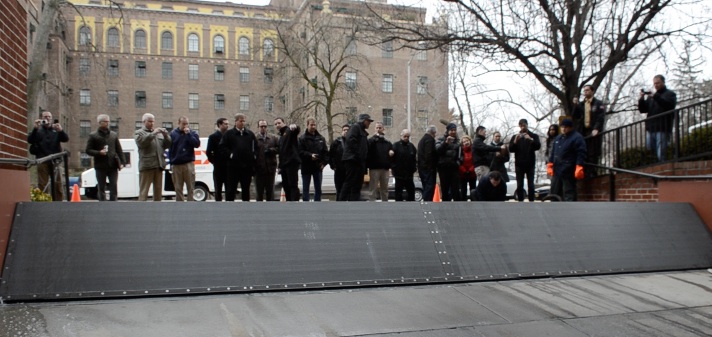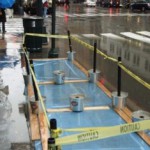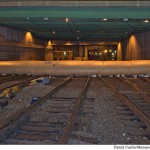Engineers, architects and facility personnel responsible for Sandy flood mitigation projects visited a FloodBreak customer site recently to see the passive flood barrier system deploy during a maintenance test and evaluate its role in preventing future flood damage.

The New Normal?
Hurricane Sandy’s devastation, a year after Tropical Storms Irene and Lee resulted in catastrophic flooding in Upstate NY and New England, has forced many to take seriously the threat of flooding posed by climate change.
Until Hurricane Irene last year, New York City had not been hit by a hurricane in more than a century but climate change experts point out that three of the highest floods recorded in the past century have occurred in the last three years.
A new realization: New York is just as susceptible to natural disaster as the rest of the world. The catastrophe prompted New York Gov. Andrew Cuomo to propose a feasibility study to consider the idea of surge barriers. While these barriers have proven to be effective in London and The Netherlands, they are expensive and won’t provide protection to all vulnerable areas.
What is needed is a combination of smart rebuilding and effective flood proofing. While most damaged properties were caught off guard, some of the flood protection measures used simply didn’t work. Old-fashioned sandbags, plywood and rubber bladders were no match for the storm surge. When elevation or moving isn’t an option, proven passive flood mitigation like FloodBreak flood barriers, is the smart solution.



